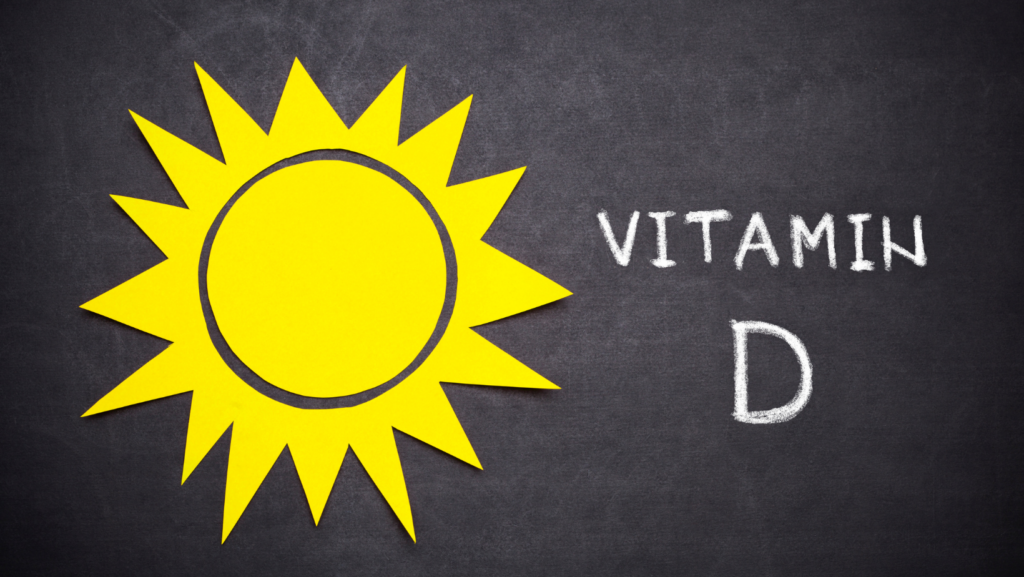In an age where many spend more time indoors than ever before, it’s essential to shed light on one vital element that often goes unnoticed in our quest for good health: Vitamin D.
Despite our increasing fear of sun exposure and its potential risks, understanding the truth about Vitamin D is crucial!
This article aims to dispel common misconceptions and provide you with essential insights into the world of Vitamin D and its profound impact on your well-being.
The Sun: Nature’s Best Vitamin D Source
While some foods can provide Vitamin D, the most abundant source is the sun itself. When your skin is exposed to the sun’s UVB rays, your body naturally produces Vitamin D. While food plays a role, it can’t match the efficiency of sunlight[1].
Recognizing the Signs of Vitamin D Deficiency
Vitamin D deficiency can lead to a range of debilitating symptoms and long-term health issues, including frequent illness, fatigue, hair loss, skin problems, and more. These symptoms can significantly impact your quality of life and overall health[2].
Crucial Factors in Vitamin D Production
Several factors influence your body’s ability to produce Vitamin D when exposed to sunlight:
Skin type: Lighter complexions produce Vitamin D more efficiently.
Geography: Proximity to the equator and sun exposure during summer months enhance Vitamin D production.
Exposed skin: The more skin exposed to sunlight, the more Vitamin D your body can produce. Sunscreen and Its Impact on Vitamin D Production
To optimize Vitamin D production, large areas of skin must be exposed to the sun. Using sunscreen or only exposing specific areas, like your arms and face, can hinder this process.
However, scientists have looked into the question, can humans make enough vitamin D year-round from sun exposure alone. They have estimated that it’s possible if you live between Atlanta, GA and the equator, but above this it’s very difficult.
So, vitamin D insufficiency has, unfortunately, become very common. Our modern indoor lifestyle and appropriate concerns over skin cancer have made it excessively difficult for people to achieve optimal vitamin D levels from the sun alone.
Should You Consider Vitamin D Supplements?
One way to address suboptimal sun exposure and vitamin D levels is supplementation. But how much vitamin D should you take? Recommendations vary, with experts suggesting different optimal blood levels[5].
The best way to be sure your vitamin D levels are optimal is via a blood test. The typical lab range for vitamin D is 30-100 (though this varies at different labs). Using this range as a baseline, an optimal blood level is likely 45-65. There is some research showing higher levels may be more helpful, particularly in the winter. I aim for a happy medium.
Family Medicine doctors in Canada have reported that keeping blood levels of vitamin D just over 100 throughout the winter greatly decreases risk of contracting influenza[4]. This is an exciting possibility, but more studies are needed so we can better understand their results and if there are any long term side effects to their approach.
How much vitamin D should you supplement with?
Ultimately, it’s not about what dose of vitamin D you take, it’s how your body processes it. Once someone in my medical practice starts vitamin D, I regularly check their blood levels to ensure they are moving into that optimal range. With vitamin D, you don’t want too little or too much. Really, the only way to know if you’re taking the right amount is to follow blood tests.
Is Vitamin D Toxicity a Concern?
While Vitamin D toxicity is rare, it’s essential to be informed. Excessive Vitamin D intake can lead to hypercalcemia, a condition characterized by elevated calcium levels in the blood[6]. Symptoms include abdominal or bone pain, confusion, fatigue, and more.
The Essential Role of Vitamin D
Beyond preventing the consequences of deficiency, Vitamin D has demonstrated its value in supporting cognitive function, especially in older adults[7]. As our population ages, preserving cognitive health becomes increasingly important, making Vitamin D supplementation a potential key to overall well-being.
Conclusion
Vitamin D is a potent and often underestimated contributor to our health and vitality. While it’s true that modern lifestyles may limit our sun exposure, it’s crucial to take proactive steps to ensure you’re getting an adequate supply of this essential vitamin. Whether through sunlight, dietary sources, or supplements like our BioActive D3, understanding your Vitamin D needs is vital for your long-term well-being.
Take control of your health by ensuring your Vitamin D is being met – especially during the winter months when it isn’t as light out.
Discover BioActive D for ultimate health today!
Sources:
- Vitamin D Council – How do I get the vitamin D my body needs?
- ScienceDaily – Vitamin D Deficiency Is Widespread And On The Increase
- NIH Office of Dietary Supplements – Vitamin D
- The Vitamin D Council Blog & Newsletter – How much vitamin D is needed to achieve optimal levels?
- Can Fam Physician – Vitamin D for influenza
- Vitamin D Council – Am I Getting Too Much Vitamin D?
- Current Neurology and Neuroscience Reports – The Association between Serum Vitamin D Level and Cognitive Function in Older Adults




